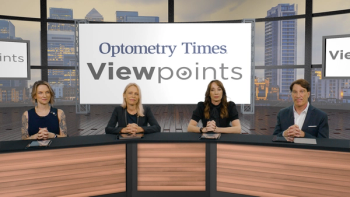
All things glaucoma: A triad approach to evaluating the optic nerve, plus GlaucoMantras to carry with you
Austin Lifferth, OD, FAAO, shares highlights from his AAOpt 2022 presentations, including a triad approach to evaluating the optic nerve in glaucoma, and recentering glaucoma care with these 5 GlaucoMantras.
Austin Lifferth, OD, FAAO, from Center for Sight in Carmel, Indiana, sat down with Optometry Times during the 2022 American Academy of Optometry meeting held in San Diego to discuss his two presentations: 1) "Critical evaluation of the optic nerve in glaucoma — a triad approach," and 2) "GlaucoMantras: Recentering our glaucoma care."
Editor's note: This transcript has been edited for clarity.
Hello, Austin Lifferth from Center for Sight in Carmel, Indiana. I'm pleased to talk about two talks we come up with at this Academy.
This first one is a systematic evaluation of the optic nerve in glaucoma, a triad approach. And there's three main things I think are important to make sure we do every time we see that nerve, ideally with every patient.
First one is to look at the size of the neuroretinal rim and the context of the size of the nerve, and to see more the rim-to-disc ratio, see what might be missing in those areas.
After you look at the rim-to-disc ratio, the next thing to do is to look for any disc hemorrhages. These are going to be in the inferior temporal or superotemporal sectors of the optic nerve, commonly where we see the neuroretinal rim thinning.
After you look at your disc hemorrhages, then fan outward and look for retinal nerve fiber layer defects, which are highly associated with disc hemorrhages.
So it's a quick triad approach. If you look at the neuroretinal rim, and then for temporal and superotemporal areas, disc hemorrhages and correlating retinal nerve fiber layer defects, you are more likely to detect earlier glaucoma sooner and detect progression sooner. That's the first talk about a qualitative systematic evaluation of the optic nerve in glaucoma.
The second one I think is important is a term called glaucoma mantras. Made it up. But anway, mantras, phrases to help center our care and glaucoma care. There's five ones that I think are important.
The first one is sooner rather than later. I mean, if we can diagnose patients earlier, sooner with glaucoma, we have a better prognosis, sooner rather than later.
After we diagnose them, then we want to do some testing. And the key is to make sure that they correlate structure versus function, partly because we want to make sure we're not overlooking any non-glaucomatous optic neuropathies. So we correlate structure with function, we can make sure that we're not overlooking those problems, but also, every time we correlate, it increases certainty as a provider and for the patients. So it's important to do both for that. So that's the second one is correlate and carry on.
The third one is repeat, repeat, repeat, repeat. So for different testing, we make sure we repeat the testing that also increases certainty to make sure we have more reliable measurements for the patient, and that helps us guide our patient decisions.
Once we have done those things of diagnosing earlier, correlating structure function, repeating things for certainty, the fourth one is we want to start treatment. And the fourth mantras lower is better. I mean, obviously we want to get the pressure lower so we can have better prognosis and we can control the disease better.
Having said that, the fifth mantra balances that: Less is more. So we can easily diagnose and prescribe a lot of eye drops; however, if it's going to cause more ocular surface disease, more chances of non-adherence, more cost to the patient, more adverse side effects, we don't want to do that. So less is more when we try to lower the pressure as much as we can.
So in summary, those are five mantras as we practice glaucoma care. And this is relevant for every stage on the glaucoma spectrum. Making sure we diagnose sooner rather than later; correlate and carry on; third one is repeat, repeat, repeat, repeat; fourth one is lower is better, make sure we lower the pressures sufficiently; balanced with the fifth mantra, which is less is more. So hopefully you find it helpful as you manage glaucoma patients by looking at them more systematically, but also starting diagnosing and starting treatment for our glaucoma patients. Thanks so much.
Newsletter
Want more insights like this? Subscribe to Optometry Times and get clinical pearls and practice tips delivered straight to your inbox.












































.png)


